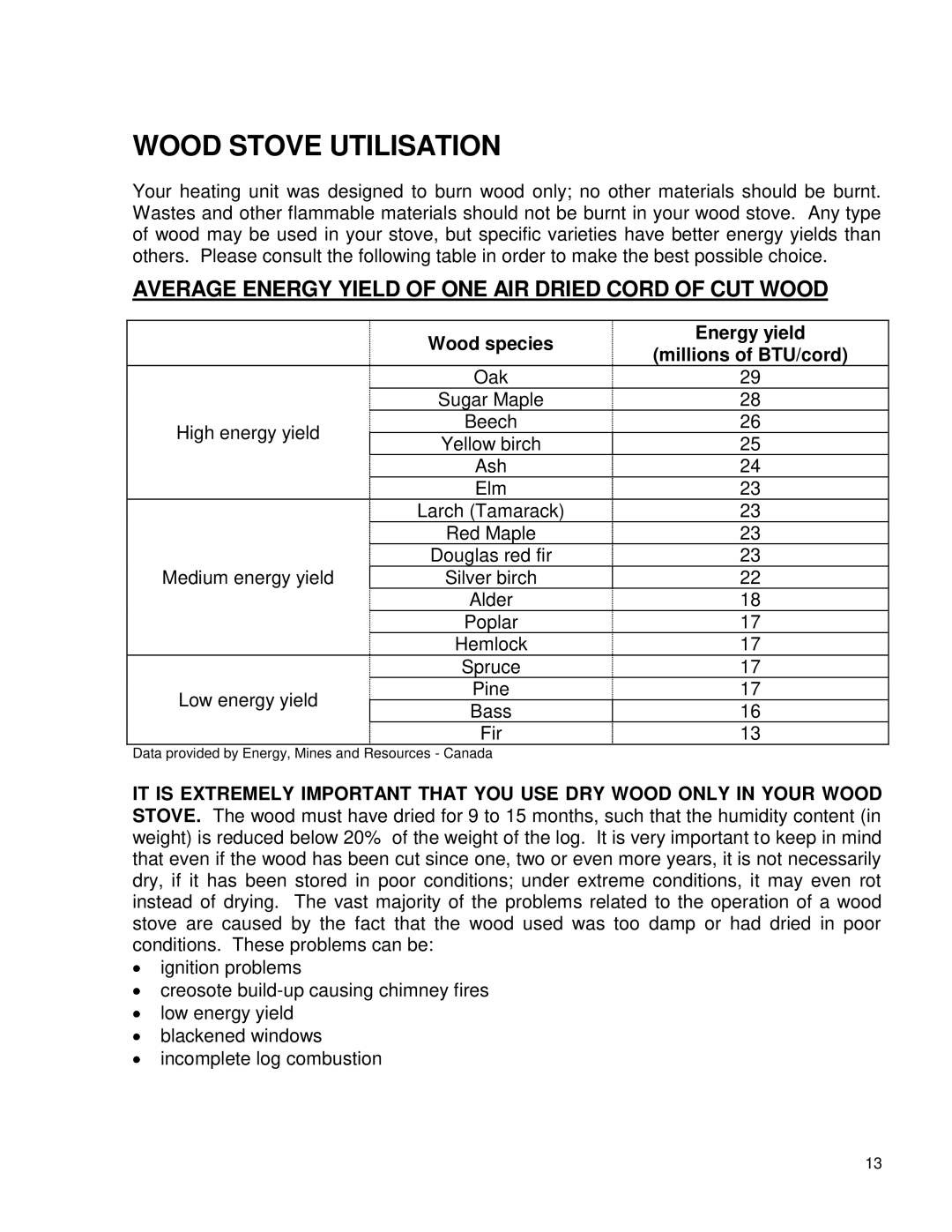45109A specifications
The Drolet 45109A is a highly efficient wood stove designed to provide warmth and comfort while minimizing environmental impact. This model combines modern technology with classic design, making it a popular choice for homeowners looking to enhance their heating solutions.One of the standout features of the Drolet 45109A is its impressive heating capacity. It can effectively heat areas up to 2,000 square feet, making it ideal for large living spaces or open-plan layouts. With a maximum output of 75,000 BTUs, this stove delivers substantial warmth, ensuring that your home remains cozy during the cold months.
Efficiency is a key aspect of the Drolet 45109A, boasting a remarkable efficiency rating of up to 78%. This means that a significant portion of the energy produced from burning wood is converted into heat, resulting in reduced fuel consumption and lower heating costs. This efficiency not only benefits your wallet but also contributes to a reduced carbon footprint, aligning with eco-friendly practices.
The Drolet 45109A features a robust firebox made from heavy-duty steel, ensuring durability and longevity. Its large viewing window is equipped with a ceramic glass that can withstand high temperatures, allowing for a beautiful view of the flames while maintaining safety. The air wash system keeps the glass clean, providing a clear view of the fire for an extended period.
In terms of functionality, the Drolet 45109A incorporates an advanced combustion system that enhances the stove's performance. The secondary combustion feature ensures that gases and particulates are burned more thoroughly, which translates to cleaner emissions. This technology not only improves heating efficiency but also adheres to stringent environmental standards.
Additionally, the stove includes adjustable air controls for precise temperature management. Users can easily regulate the burn rate and heat output, ensuring maximum comfort while minimizing wood consumption. The compact size of the Drolet 45109A makes it versatile and easy to install in various settings, from traditional homes to modern cabins.
The Drolet 45109A combines efficiency, durability, and an aesthetically pleasing design, making it an excellent choice for those looking to invest in a reliable wood heating solution. With its advanced technologies and robust features, it stands out in the market as a leader in eco-friendly heating.

